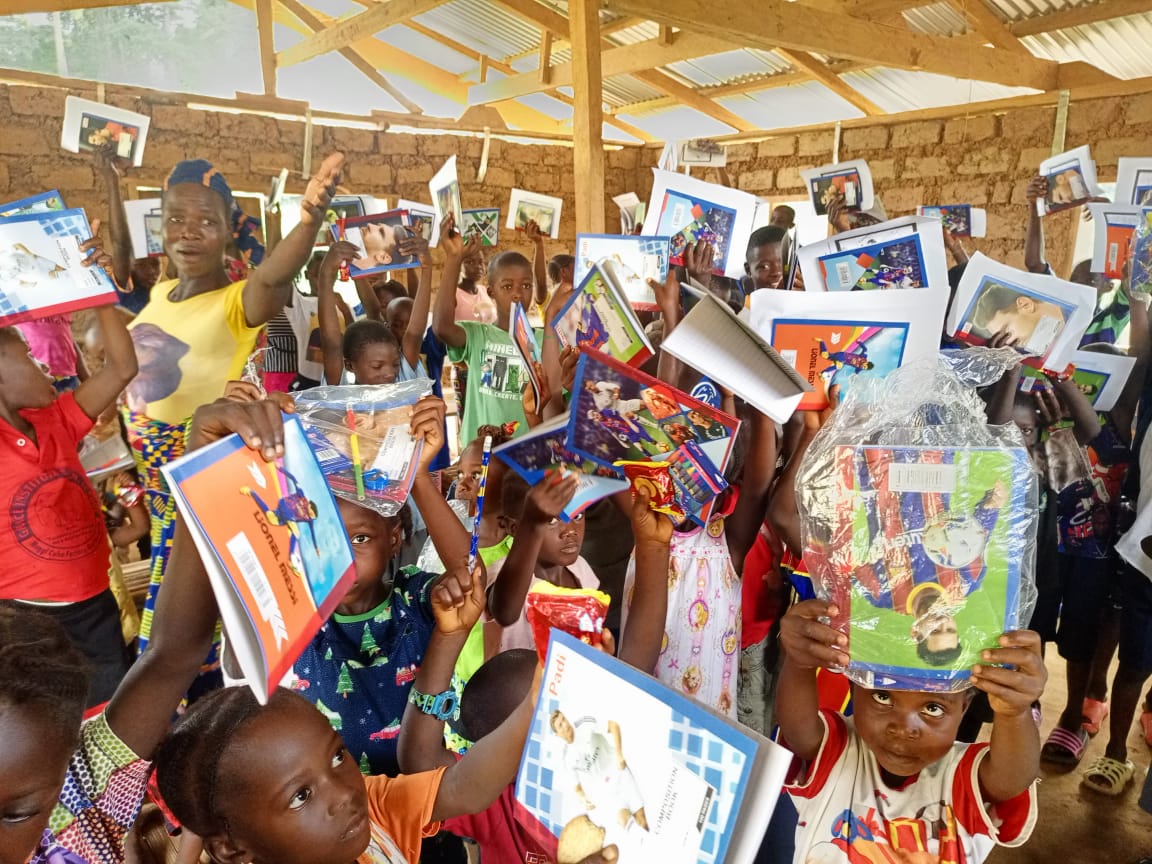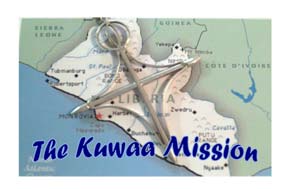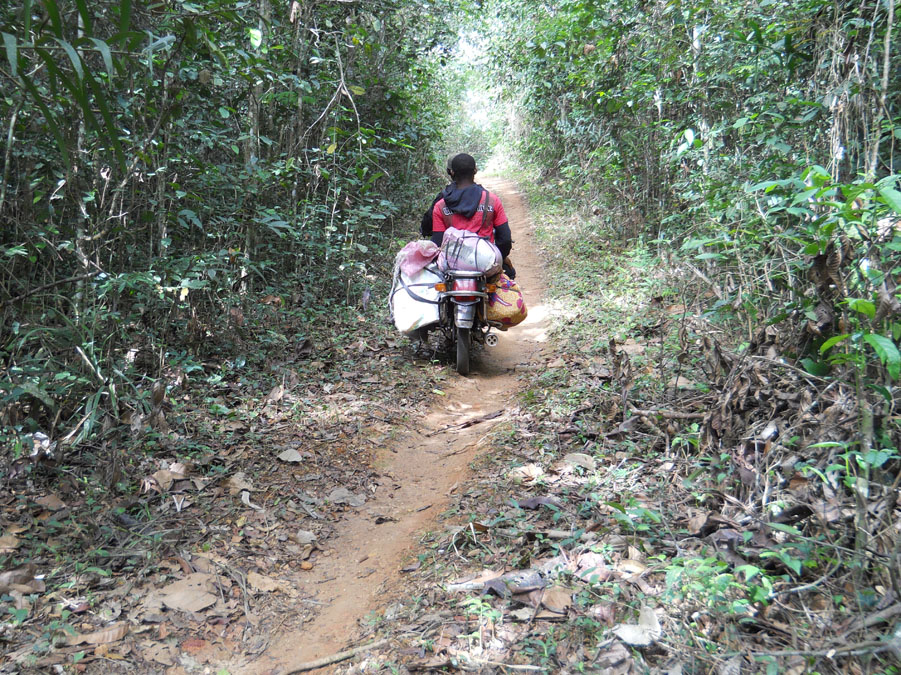5 YEARS AND GOING STRONG!
WHAT WE’VE DONE! WHAT WE ARE DOING!
In a short 5 year period commencing on February 2, 2008, building on long established Liberian relationships, supported by donations from across the U.S., and relying on God’s guidance, the Kuwaa Mission has accomplished much for the Kuwaa People. These people live literally at the end of the road: a 120 mile trip from Monrovia on unmaintained dirt roads that are impassible for 6 months of the year due to the tropical rains. From the end of the road one walks to 13 of the 16 villages. From one end to the other it takes several days.
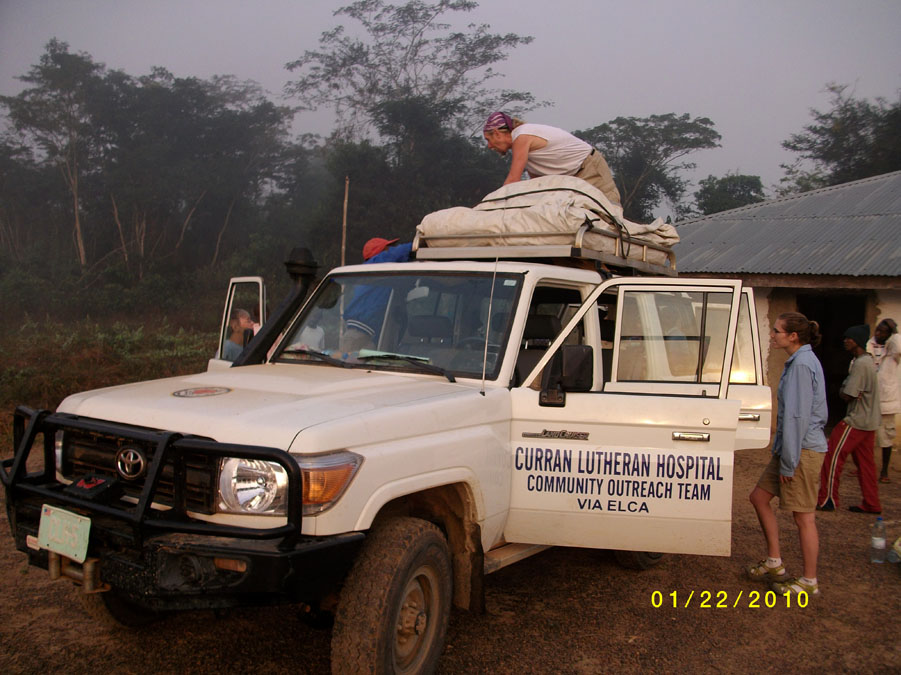 The Kuwaa Mission was founded in 2008 by longtime friends Rev. Dr. D. Jensen Seyenkulo and Rev. Dr. Richard Thompson. Jensen is a Kuwaa man now serving as the Bishop of the Lutheran Church in Liberia. Dick and his family served as missionaries to the Kuwaa People through Lutheran Bible Translators in the 1970s for 10 years. Dr. Thompson served as the first CEO of the Kuwaa Mission. Health matters required him to step down to a lesser position. Today he still serves as an advisor to the Mission’s Board of Directors. Both Seyenkulo and Thompson felt called by God to help the Kuwaa People rebuild their lives, both spiritually and physically, after years of civil strife in Liberia.
The Kuwaa Mission was founded in 2008 by longtime friends Rev. Dr. D. Jensen Seyenkulo and Rev. Dr. Richard Thompson. Jensen is a Kuwaa man now serving as the Bishop of the Lutheran Church in Liberia. Dick and his family served as missionaries to the Kuwaa People through Lutheran Bible Translators in the 1970s for 10 years. Dr. Thompson served as the first CEO of the Kuwaa Mission. Health matters required him to step down to a lesser position. Today he still serves as an advisor to the Mission’s Board of Directors. Both Seyenkulo and Thompson felt called by God to help the Kuwaa People rebuild their lives, both spiritually and physically, after years of civil strife in Liberia.
Dr. Seyenkulo and Mr. Stan Olsen joined Re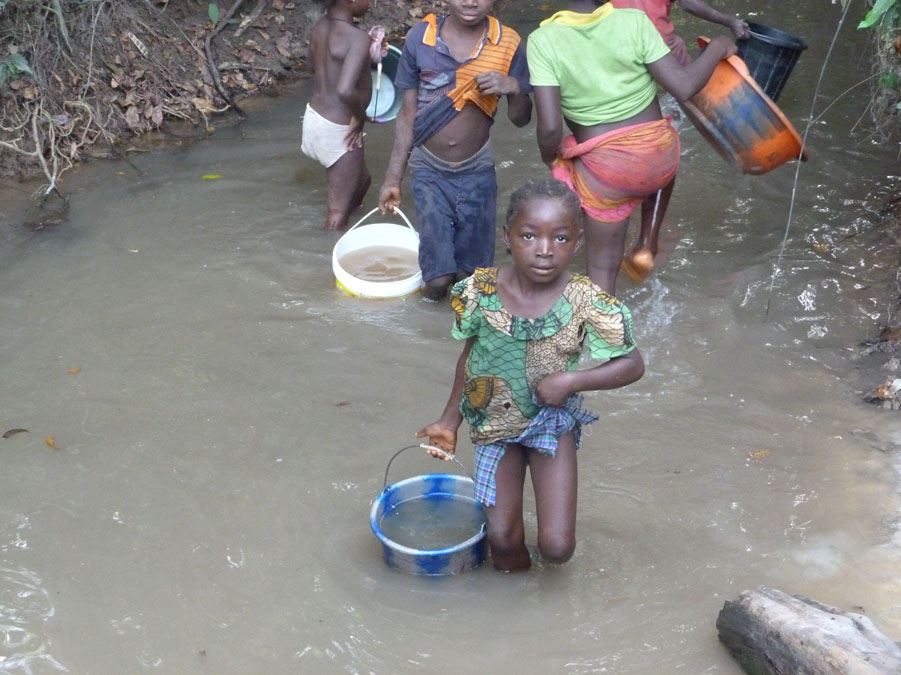 v. Chris Kowula (a Kuwaa Lutheran Pastor) on the initial trip to the remote Kuwaa forest in 2009. Much time was spent learning the needs of the people and how the Mission could best help them. Meetings were held in several villages as the Mission personnel discussed the issues and needs of the people with the elders and chiefs. The Kuwaa people were suffering greatly from the long war. They were asked how the Mission could best help them. The answer was straight forward and obvious: “Our water is bad and people are dying, especially the children. Please bring us good water.” Many people were doubtful as other charitable organizations had come and done surveys, but none of them had returned to help.
v. Chris Kowula (a Kuwaa Lutheran Pastor) on the initial trip to the remote Kuwaa forest in 2009. Much time was spent learning the needs of the people and how the Mission could best help them. Meetings were held in several villages as the Mission personnel discussed the issues and needs of the people with the elders and chiefs. The Kuwaa people were suffering greatly from the long war. They were asked how the Mission could best help them. The answer was straight forward and obvious: “Our water is bad and people are dying, especially the children. Please bring us good water.” Many people were doubtful as other charitable organizations had come and done surveys, but none of them had returned to help.
When the US contingency returned to the US, they began making plans with the rest of the Board of Directors to provide the Kuwaa people with potable water. For many villages, this was the first time ever that they would receive such help. The initial endeavor became possible with a grant from Wheat Ridge Ministries. They provided the funds that enabled the Mission to purchase water filters to take to Liberia and begin a series of new wells with hand pumps. The Mission met with Samaritan’s Purse, a Non-Governmental Organization (NGO) from the US that is very active around the world and in Liberia. They learned about the Kuwaa Mission and what it wanted to do. The Mission asked Samaritan’s Purse to be a partner mission. They responded positively! They were generous with their time and promised to help as best they could.
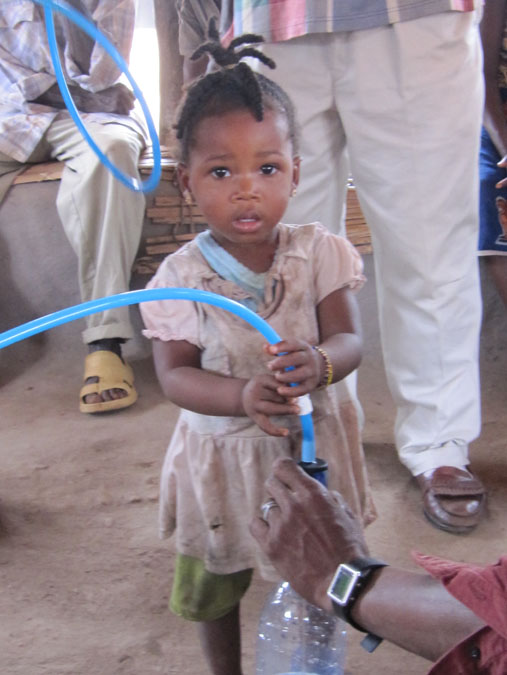 Stan returned to Liberia in 2010, his second trip, with Cindy Ellis (now Cindy Bye) and her daughter with over 100 water filters to distribute to the people, the schools and the one health clinic serving 16 villages. They walked to all but three villages over a two week trip through the Liberian jungle (bush) eating and talking with the local people and sleeping in their homes. It was a challenging and rewarding trip. A survey was taken in each village to determine roughly the number of people, general age groups, main illnesses, and water supplies. Each village was provided with several filters depending on their size, and they received instruction on how to use and maintain them. When they saw the team drink the water they had just purified, they were very thankful. A promise to return and begin installing wells in each village was given to them.
Stan returned to Liberia in 2010, his second trip, with Cindy Ellis (now Cindy Bye) and her daughter with over 100 water filters to distribute to the people, the schools and the one health clinic serving 16 villages. They walked to all but three villages over a two week trip through the Liberian jungle (bush) eating and talking with the local people and sleeping in their homes. It was a challenging and rewarding trip. A survey was taken in each village to determine roughly the number of people, general age groups, main illnesses, and water supplies. Each village was provided with several filters depending on their size, and they received instruction on how to use and maintain them. When they saw the team drink the water they had just purified, they were very thankful. A promise to return and begin installing wells in each village was given to them.
 2010 was the year we had our first “volunteer”. (Actually, we are all volunteers.) Cindy decided she wanted to spend time with the people and help with the wells, using her engineering background in water and wastewater engineering. She spent 4 months with the Kuwaa people. Her love of the people and dedication to the Mission’s cause is infectious. Cindy became a Board member and is now the Chairperson of the Kuwaa Mission Board.
2010 was the year we had our first “volunteer”. (Actually, we are all volunteers.) Cindy decided she wanted to spend time with the people and help with the wells, using her engineering background in water and wastewater engineering. She spent 4 months with the Kuwaa people. Her love of the people and dedication to the Mission’s cause is infectious. Cindy became a Board member and is now the Chairperson of the Kuwaa Mission Board.
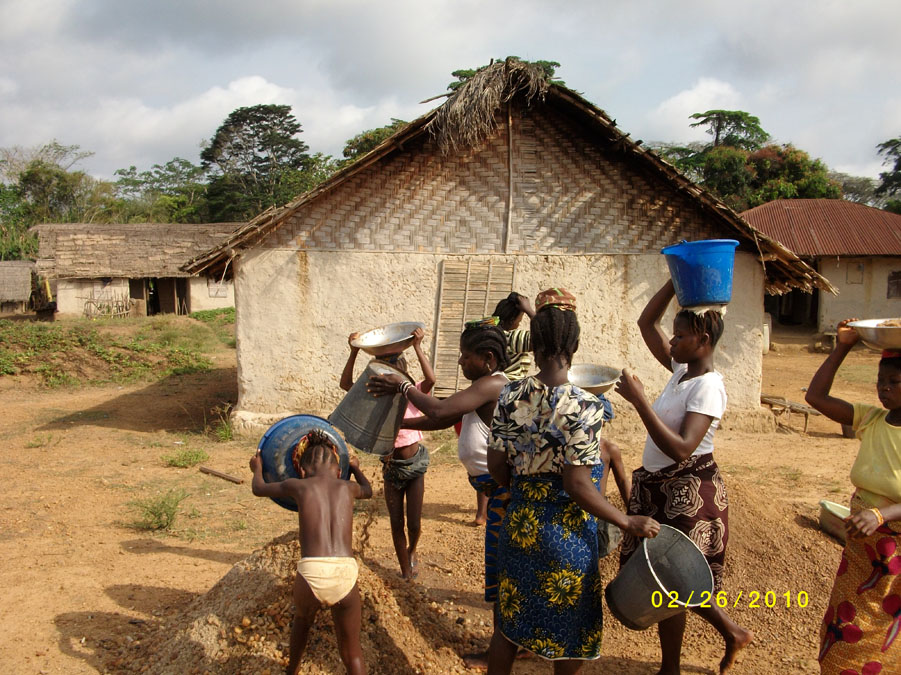 Year three, 2011, saw the beginning of water projects in earnest, though small in scope, by installing wells in two villages and repairing wells in four other villages. Materials were transported by truck to Fassama at the end of the road. From there the people carried the items on their heads to their villages. There were 60 loads to carry for 9 hours through the forest. As is the case in all the projects, the people have to agree to do their fair share before work is started in their village. They cooperate by carrying the well materials to their villages, digging sand and gravel for concrete and hauling it to town, cooking for the workers and providing lodging.
Year three, 2011, saw the beginning of water projects in earnest, though small in scope, by installing wells in two villages and repairing wells in four other villages. Materials were transported by truck to Fassama at the end of the road. From there the people carried the items on their heads to their villages. There were 60 loads to carry for 9 hours through the forest. As is the case in all the projects, the people have to agree to do their fair share before work is started in their village. They cooperate by carrying the well materials to their villages, digging sand and gravel for concrete and hauling it to town, cooking for the workers and providing lodging.
 The mission personnel also saw the need to expand our work programs beyond water. We provided our first “scholarships” to enable three men to receive training at the Lutheran Church in Liberia’s (LCL) Lay Training Center in Totota, Liberia. They are now ordained Deacons. We also provided a nursing scholarship to Ester Kowula to enable her to obtain her RN degree in 2014. This program is located at Curran Hospital in Zorzor, Liberia and is a ministry of the LCL and the Liberian Ministry of Health.
The mission personnel also saw the need to expand our work programs beyond water. We provided our first “scholarships” to enable three men to receive training at the Lutheran Church in Liberia’s (LCL) Lay Training Center in Totota, Liberia. They are now ordained Deacons. We also provided a nursing scholarship to Ester Kowula to enable her to obtain her RN degree in 2014. This program is located at Curran Hospital in Zorzor, Liberia and is a ministry of the LCL and the Liberian Ministry of Health.
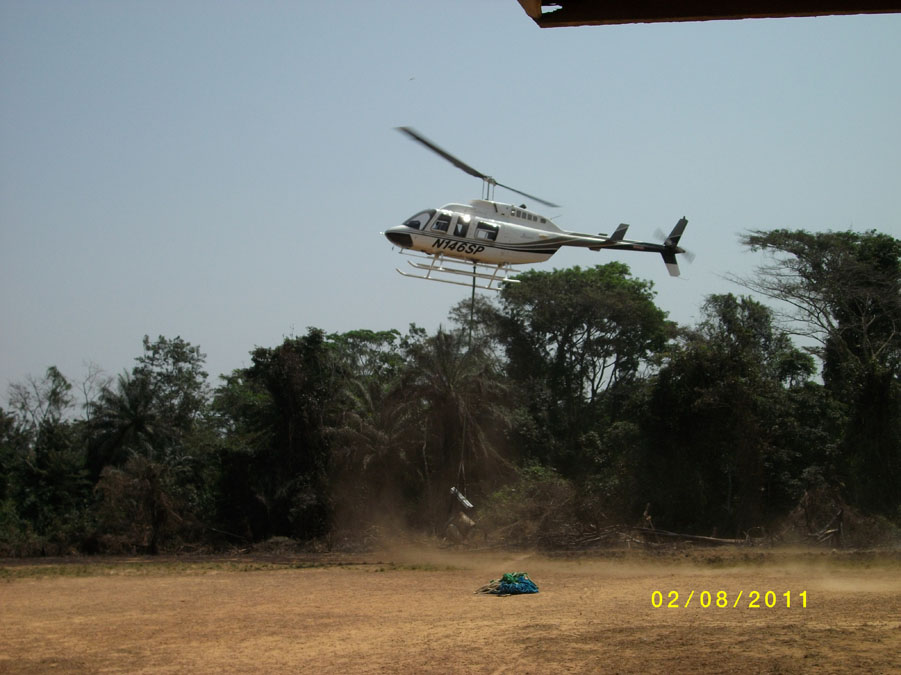 Year four, 2011, was an ambitious year as the Mission undertook another three wells in addition to rehabilitating several others. Talking with the people it was discovered that at least 50% of the water filters were still being used, a much higher percentage than anticipated. Providing school supplies to children and teachers in several of the villages began. The joy on the children’s faces was precious as they received their own writing tablet and pencil the first time in their lives!!
Year four, 2011, was an ambitious year as the Mission undertook another three wells in addition to rehabilitating several others. Talking with the people it was discovered that at least 50% of the water filters were still being used, a much higher percentage than anticipated. Providing school supplies to children and teachers in several of the villages began. The joy on the children’s faces was precious as they received their own writing tablet and pencil the first time in their lives!!
The people asked for help building a clinic, as the only clinic was in Fassama which is over a day’s walk from some of the villages. Not knowing what this would involve but figuring that if Greg Mortensen could build a school in remote Pakistan, the mission agreed to build a clinic in remote Liberia. A plan was sketched up, reviewed and approved by the County Health Department, so making plans to make this dream a reality began.
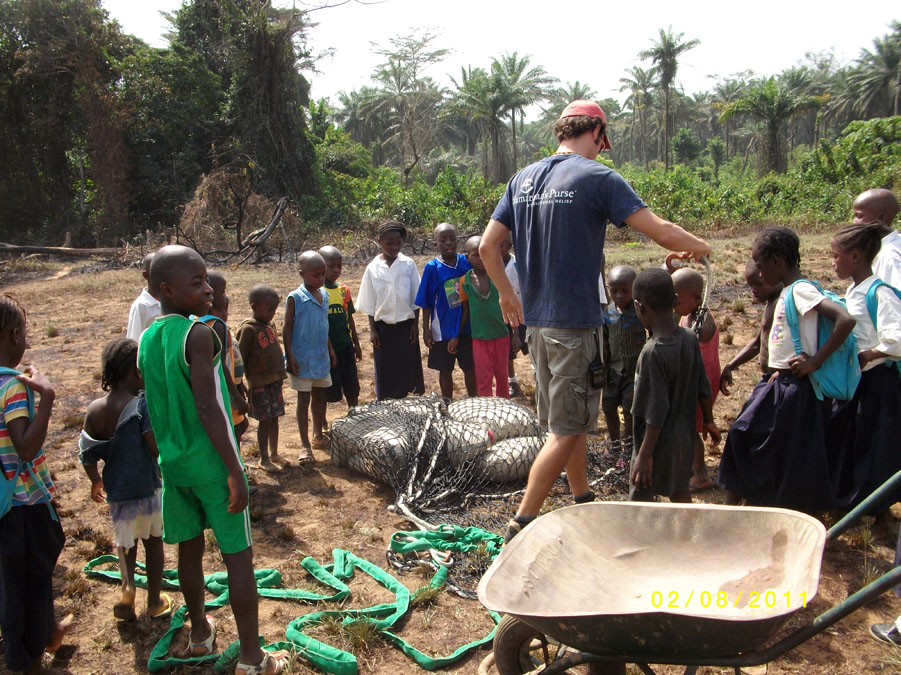 This year Samaritan’s Purse began helping with transporting well materials with their truck to the end of the road. Not only did they provide a truck but they also provided use of their helicopter to deliver the items directly to the villages. (GPS waypoints for each village, made on the first tour of the villages in 2009, pointed the way.) Since this first “joint-venture”, Samaritan’s Purse continues to support the work of the Kuwaa Mission. They are a valuable friend God has provided to help the Kuwaa people. They have made the work much easier with their prayers and support – not to mention the helicopter.
This year Samaritan’s Purse began helping with transporting well materials with their truck to the end of the road. Not only did they provide a truck but they also provided use of their helicopter to deliver the items directly to the villages. (GPS waypoints for each village, made on the first tour of the villages in 2009, pointed the way.) Since this first “joint-venture”, Samaritan’s Purse continues to support the work of the Kuwaa Mission. They are a valuable friend God has provided to help the Kuwaa people. They have made the work much easier with their prayers and support – not to mention the helicopter.
In 2012 our second CEO when Rev. Seyenkulo was elected Bishop of the Lutheran Church in Liberia. He soon left Chicago to return home to assume those responsibilities. His position there and his contacts throughout Liberia have been very beneficial to the Kuwaa Mission’s work. Stan Olsen then became the third CEO for the Mission. God continues to help him lead the Mission and its work to help the Kuwaa people.
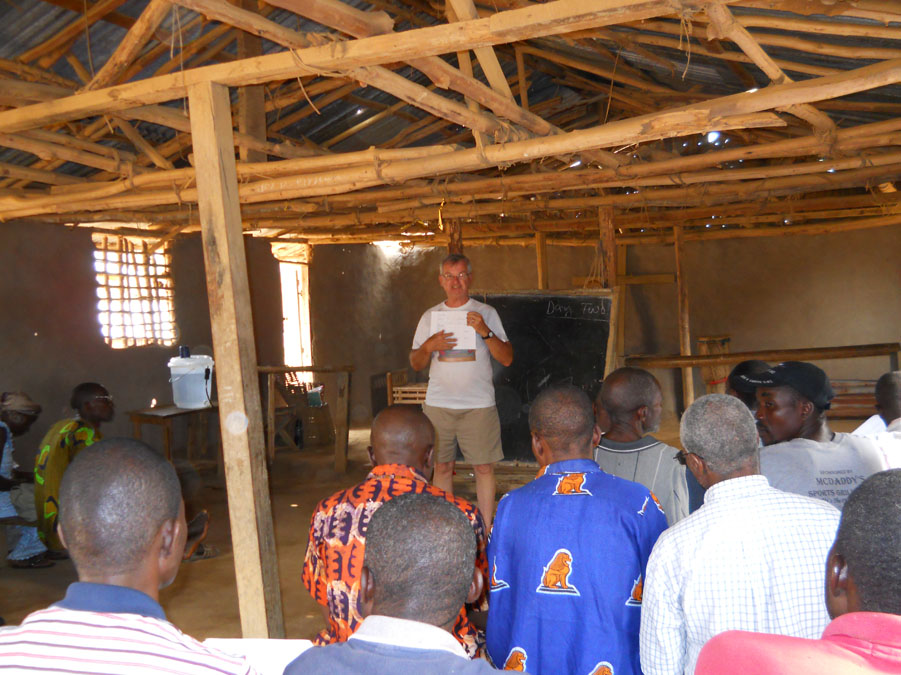 One of our board members, Ed Stelling, a former Lutheran Bible Translators missionary in the Kuwaa area, returned to Liberia after over 30 years and helped conduct two teacher training workshops – one for school teachers and one for Sunday School teachers – that were very well attended. The teachers need more education because many of them only have a little more than their students. The Mission wants to make scholarships available for local teachers and deacons.
One of our board members, Ed Stelling, a former Lutheran Bible Translators missionary in the Kuwaa area, returned to Liberia after over 30 years and helped conduct two teacher training workshops – one for school teachers and one for Sunday School teachers – that were very well attended. The teachers need more education because many of them only have a little more than their students. The Mission wants to make scholarships available for local teachers and deacons.
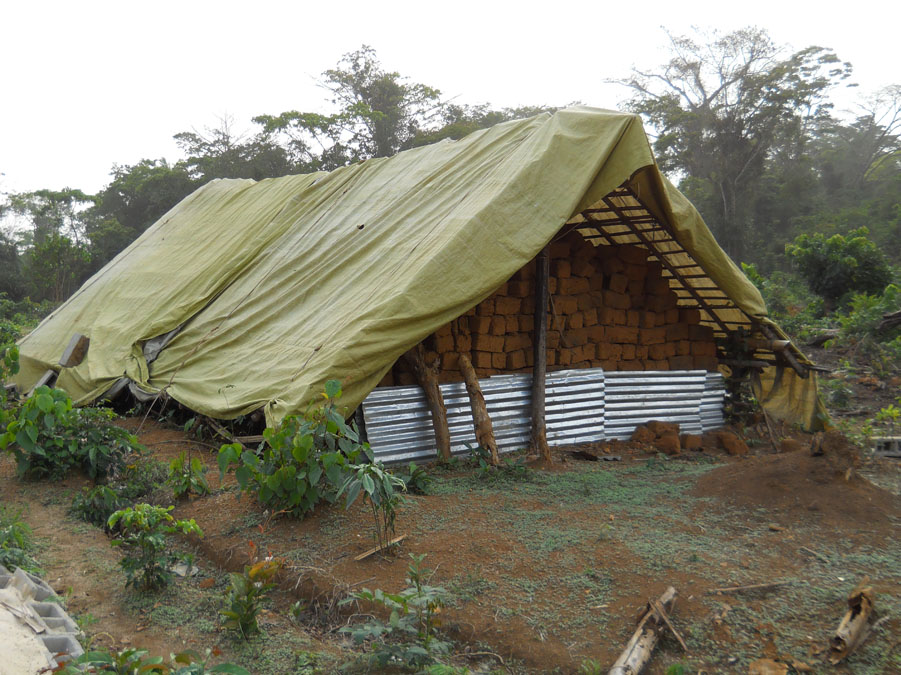 The year 2013 saw the work on the Kondesu Clinic initiated. The people made over 10,000 mud blocks for the construction. Cement and roofing materials were flown in by Samaritan’s Purse, trees were cut down and into dimension lumber and carried into town by the villagers. This wood was used for the roof framing, doors, windows and shelving. At the end of the “dry season” that year, the walls were up and plastered, the concrete floor cast, and the roof put on. This clinic encompasses a reception area, storage area, pharmacy, two exam rooms, a general ward, and a maternity ward with bathrooms. Additionally we are constructing a 2 bedroom nurses’ quarters, incinerator for medical wastes, a well, and a septic system for the clinic.
The year 2013 saw the work on the Kondesu Clinic initiated. The people made over 10,000 mud blocks for the construction. Cement and roofing materials were flown in by Samaritan’s Purse, trees were cut down and into dimension lumber and carried into town by the villagers. This wood was used for the roof framing, doors, windows and shelving. At the end of the “dry season” that year, the walls were up and plastered, the concrete floor cast, and the roof put on. This clinic encompasses a reception area, storage area, pharmacy, two exam rooms, a general ward, and a maternity ward with bathrooms. Additionally we are constructing a 2 bedroom nurses’ quarters, incinerator for medical wastes, a well, and a septic system for the clinic.
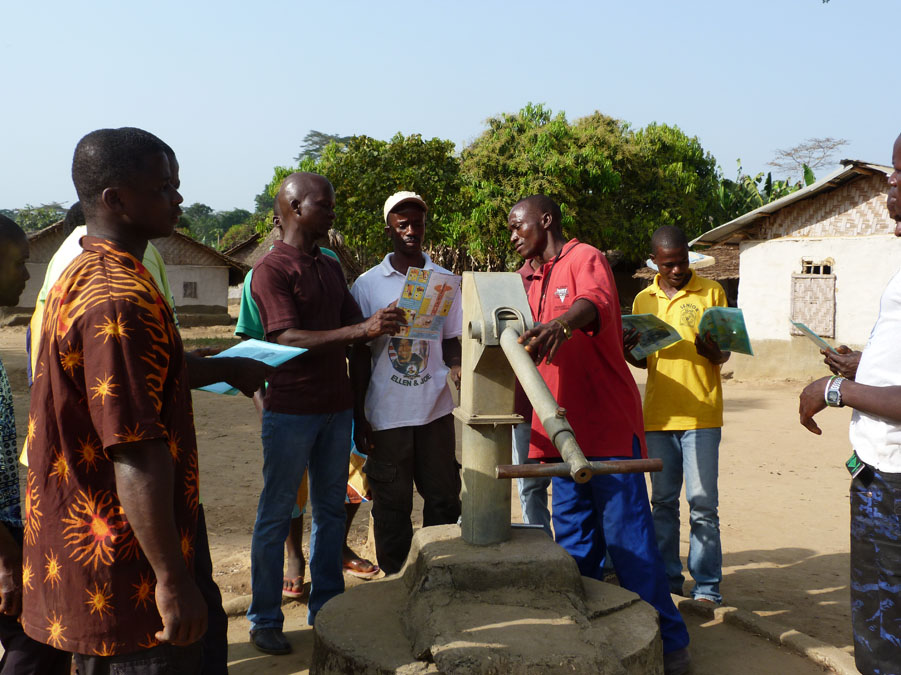 Also with the help of Samaritan’s Purse, four additional wells were completed in 2013. In order to teach the villagers how to maintain their new wells a “Pump Training Seminar” was conducted with attendees from several villages. Another volunteer, Stephan Bradley from Billings, Montana, made his first trip to the Kuwaa villages, and the Kuwaa People made their way into his heart. As an expert on membrane filtration, Stephan went to rejuvenate the water filters that had been in use for 3 years.
Also with the help of Samaritan’s Purse, four additional wells were completed in 2013. In order to teach the villagers how to maintain their new wells a “Pump Training Seminar” was conducted with attendees from several villages. Another volunteer, Stephan Bradley from Billings, Montana, made his first trip to the Kuwaa villages, and the Kuwaa People made their way into his heart. As an expert on membrane filtration, Stephan went to rejuvenate the water filters that had been in use for 3 years.
AND NOW!!
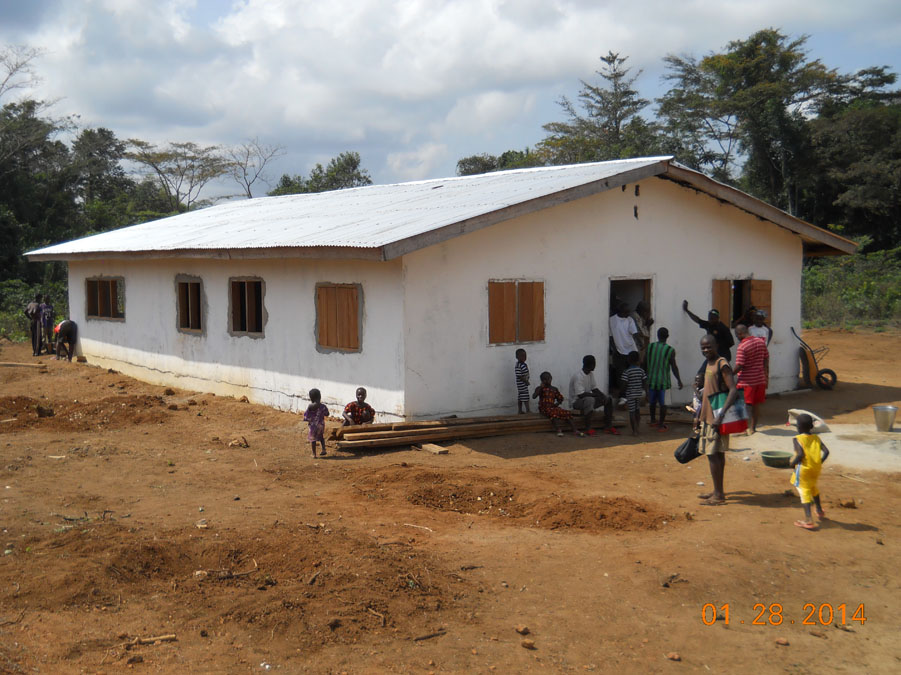 This year 2014 sees the completion of the clinic with a dedication ceremony on Palm Sunday, April 13. This promises to be a lively affair with Liberian singing, dancing and food. Invitations have been sent out to many Liberian dignitaries in hopes of their attending.
This year 2014 sees the completion of the clinic with a dedication ceremony on Palm Sunday, April 13. This promises to be a lively affair with Liberian singing, dancing and food. Invitations have been sent out to many Liberian dignitaries in hopes of their attending.
Three more wells are being installed, including one for the clinic which will also serve the adjacent school. Another “Pump Training Seminar” will be held in early April.
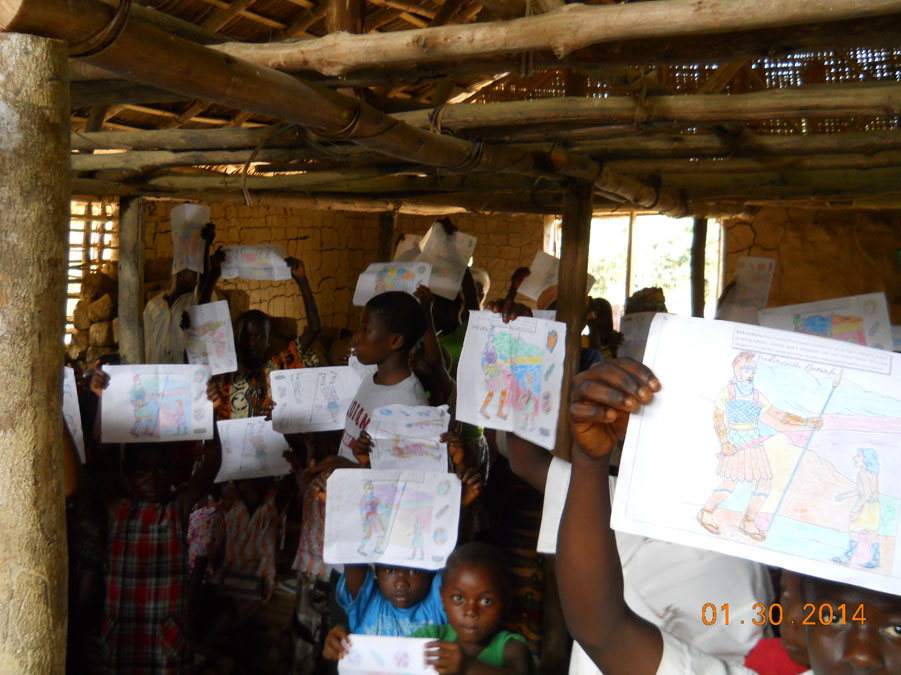 Cindy again, as usual, returned in January and inspected the clinic, helped get the well program running and conducted a “Vacation Bible School” for 106 children. We actually had several adults attend as well – nearly 140 participants. A booming success that we hope to continue each year!!
Cindy again, as usual, returned in January and inspected the clinic, helped get the well program running and conducted a “Vacation Bible School” for 106 children. We actually had several adults attend as well – nearly 140 participants. A booming success that we hope to continue each year!!
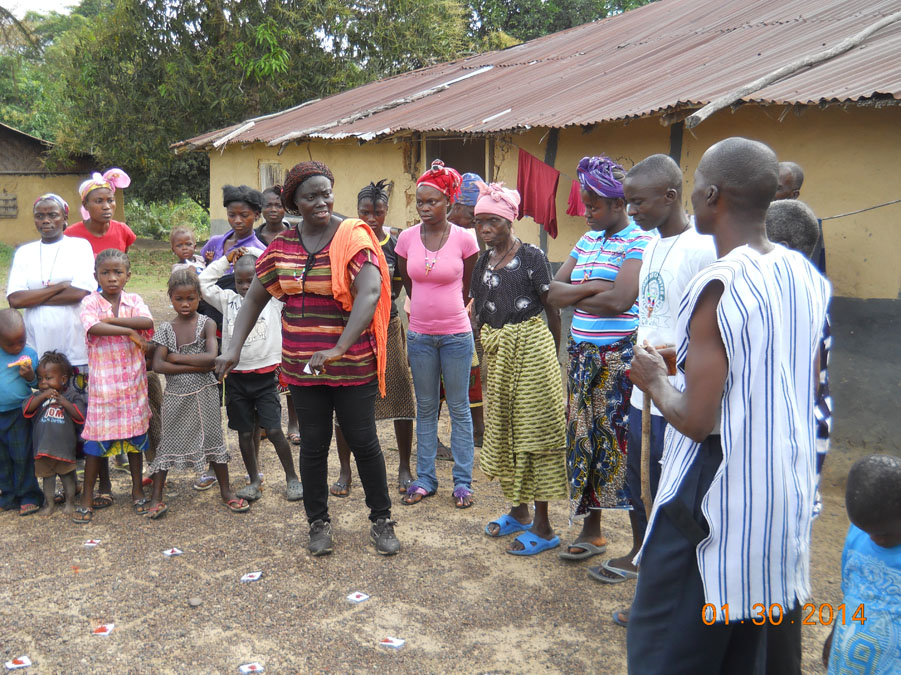 With the help of a Liberian woman, Korpu, Cindy conducted our first session of “Community Led Total Sanitation”. This is a program UNICEF developed that involves inciting community leaders in taking the initiative to remove feces from the village and surrounding areas. After the session was held in Kenata, the people understood the need to keep their town clean and to install latrines. Typically there may be one or two latrines in a village of several hundred people, and those are closely guarded by the family that built them. In April of 2014 Kenata will be revisited to see how the program is going.
With the help of a Liberian woman, Korpu, Cindy conducted our first session of “Community Led Total Sanitation”. This is a program UNICEF developed that involves inciting community leaders in taking the initiative to remove feces from the village and surrounding areas. After the session was held in Kenata, the people understood the need to keep their town clean and to install latrines. Typically there may be one or two latrines in a village of several hundred people, and those are closely guarded by the family that built them. In April of 2014 Kenata will be revisited to see how the program is going.
WHAT’S NEXT FOR THE KUWAA MISSION
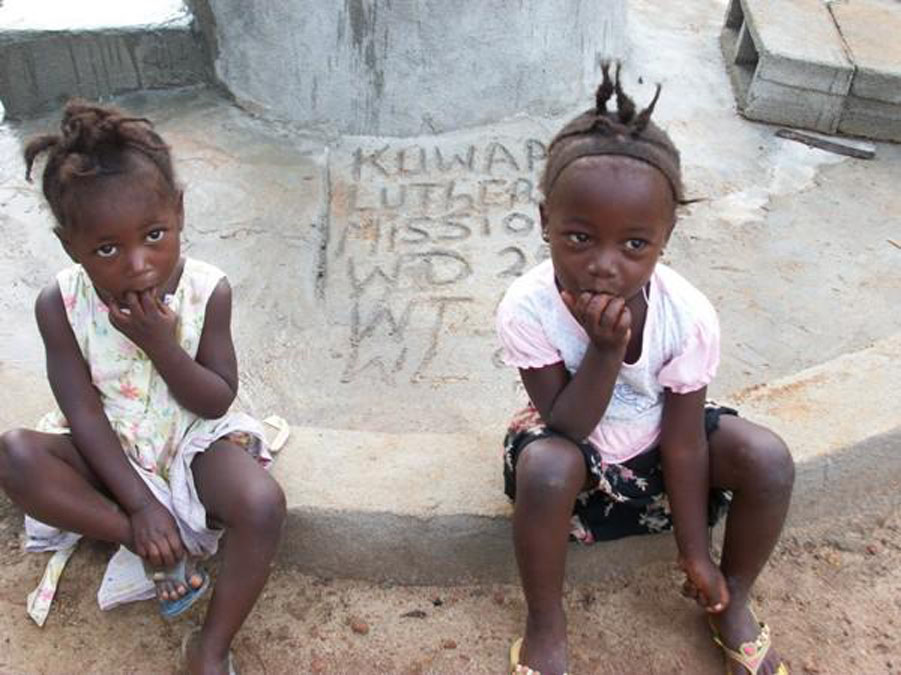 The Mission will continue installing wells as each of the villages needs at least two and many will need 3 or more based on their size. With the new wells, there is a need to continue the training seminars.
The Mission will continue installing wells as each of the villages needs at least two and many will need 3 or more based on their size. With the new wells, there is a need to continue the training seminars.
Teacher training sessions will also continue. VBS programs will continue. Sanitation education will continue. Support of the clinic will continue in conjunction with the Ministry of Health. Scholarships for deacons will continue, and hopefully, scholarships for teachers and leaders in other important areas will be possible. A scholarship program to enable ALL the children to attend school is necessary.
The condition of the road is deplorable so work with the villages to install culverts and bridges at creek crossings needs to be undertaken to enable at least motorbikes to reach the more remote villages. Without motorbikes, it is a minimum 2 day walk to the nearest village on the road system with a dependable weekly market. The motorbikes are effective in many ways, as they 1)transport local products to market, 2) transport goods from the markets to the people in the villages, 3) transport sick people to the clinics without having to be carried in a hammock, and 4) they reduce the general feeling of isolation.
HOWEVER, no work can be done without your continued prayers and financial support. We thank all of our partners who have stayed the course and ask their continued support. If you have not joined us, please considering being a prayer partner and financial supporter. VOLUNTEERS are needed here stateside as well as in Liberia. Please go to the “GET INVOLVED” tab on this website and see how you can play a major role in the lives of the Kuwaa People.
Everyone has something to offer; you don’t have to be an expert!
Feel free to contact any of the Board of Directors for additional information.
